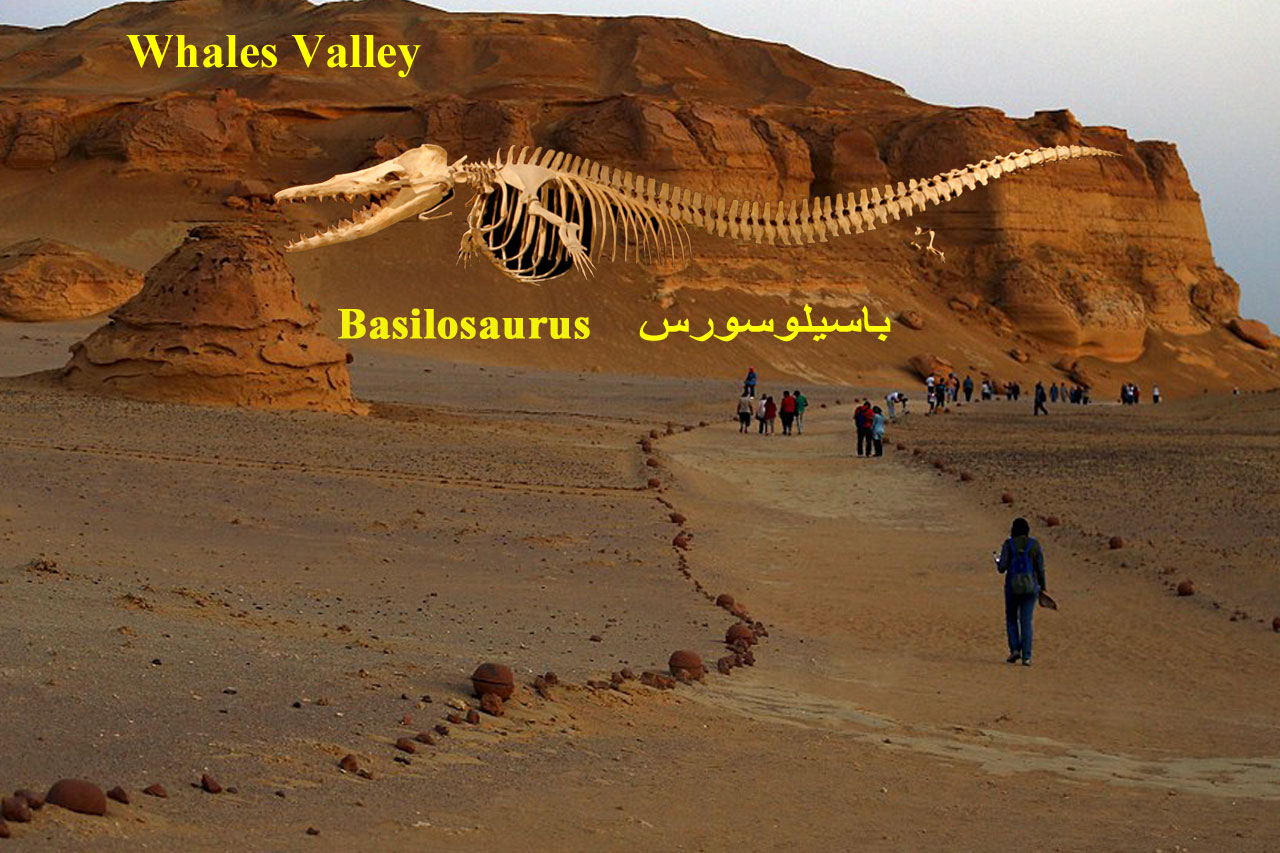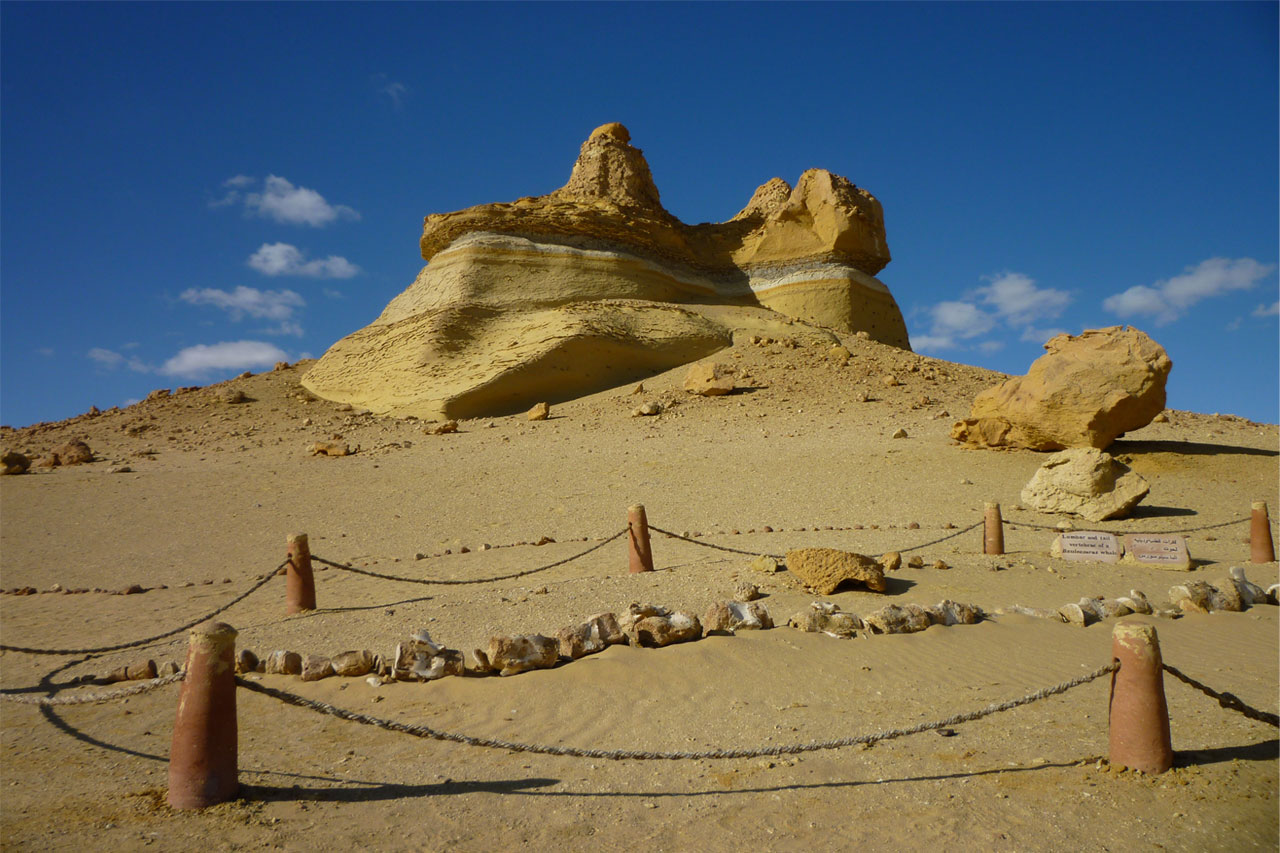Whales Valley
Wadi Al-Hitan : is a paleontological site in the Al Fayyum Governorate of Egypt, some 150 km southwest of Cairo. It was designated a UNESCO World Heritage Site in July 2005 for its hundreds of fossils of some of the earliest forms of whale, the archaeoceti (a now extinct sub-order of whales).

WADI AL HITAN
T The first fossil skeletons of whales were discovered in the winter of 1902-3. For the next 80 years they attracted relatively little interest, largely due to the difficulty of reaching the area. In the 1980s interest in the site resumed as four wheel drive vehicles became more readily available. Continuing interest coincided with the site being visited by fossil collectors, and many bones were removed, prompting calls for the site to be conserved. The remains display the typical streamlined body form of modern whales, yet retaining some of the primitive aspects of skull and tooth structure. The largest skeleton found reached up to 21 m in length, with well-developed five-fingered flippers on the forelimbs and the unexpected presence of hind legs, feet, and toes, not known previously in any archaeoceti. Their form was serpentine and they were carnivorous. A few of these skeletal remains are exposed but most are shallowly buried in sediments, slowly uncovered by erosion. Wadi El-Hitan provides evidences of millions of years of coastal marine life.

Geology
T The geology of the valley gives rise to the scenery, with wind and water erosion producing spectacular cliffs and buttes. The rocks present at Wadi Al-Hitan are all Middle to Late Eocene in age and comprise three main rock units. The Gehannam Formation comprises open marine mudstones, which are largely present on the flatter ground to the East of the public park. The rock unit that contains most of the whale fossils is the Birket Qarun Formation. This comprises yellowish open marine sandstones that form most of the cliffs and buttes. The monotony of these sandstones is broken by a white layer full of well-preserved animal burrows (previously thought to be mangrove roots) and a layer of black mudstone above that. When the cliffs of the Birket Qarun Formation are followed to the East, they are replaced by Gehannam Formation mudstones, indicating a change in water depth from shallower to deeper in that direction. The tops of the higher cliffs are within the Qasr el Sagha Formation, which comprises dark mudstones alternating with limestones full of shells and represents a lagoonal environment. Visit usto know more about whales-valley.
Experience the Aquarium
See what everyone is talking about. Visit Hurghada Grand Aquarium today.
VisitHurghada Aquarium And Enjoy Your Visit
Our mission is to offer visitors unrivaled savings at a selection of hand-picked luxurious attraction.
© 2024 Hurghada Grand Aquarium : By DST







